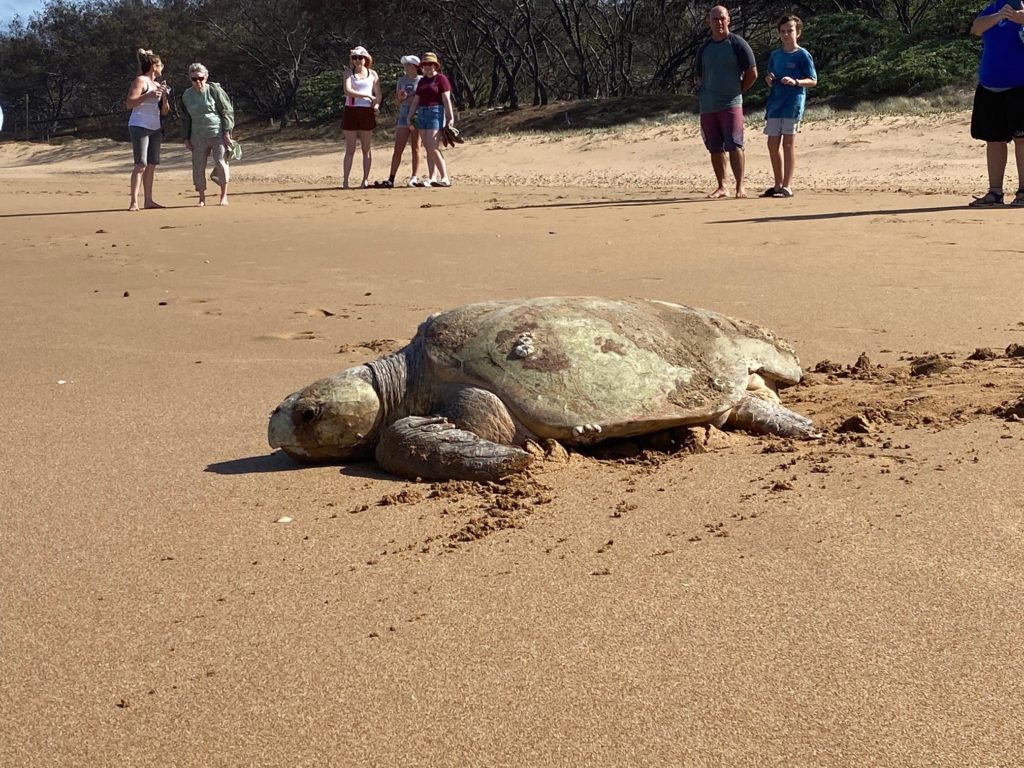
A new trial will aim to boost the population of male turtle hatchlings by providing shade and cooler conditions at Mon Repos Beach.
Climate change poses a threat to species with temperature-dependent sex determination.
A recent study on green sea turtles at the northern Great Barrier Reef showed a highly female-skewed sex ratio with almost all juvenile turtles being female.
This shortage of males might eventually cause population extinction unless rapid evolutionary rescue, migration, range shifts, or conservation efforts ensure a sufficient number of males.
The Federal Government today announced $300,000 towards beach shading and cooling trials at the world-renowned Mon Repos turtle rookery.
Mon Repos is the site of one of Australia’s longest running turtle research and monitoring programs.
Visiting the Bundaberg Region, Environment Minister Sussan Ley said the funding was part of the Government’s $6 million Reef 2050 and Natural Heritage Trust funded Great Barrier Reef Green Turtle Research program.
The program’s aim is to improve understanding of the habitat needs of turtles.
The program also supports the work of traditional owners and land and sea rangers to co-manage turtle populations that forage and nest in their sea country.
The $300,000 will support innovative trials to cool turtle nests at the site.
The next phase of these trials, which gets under way during next year’s turtle nesting (October to March), builds on work by the Queensland Government aimed at determining whether cooling parts of the nesting beach can address the increased proportion of female hatchlings caused by higher nest temperatures.
The Great Barrier Reef Marine Park Authority will work with the Queensland Parks and Wildlife Service through the Reef Joint Field Management Program to monitor the success of the nest cooling trials which aims to produce a more balanced mix of both male and female hatchlings.
Ms Ley said the monitoring work would determine whether the cooling technique could be expanded to other turtle nesting sites elsewhere on the Great Barrier Reef.
“We know that the sex of a sea turtle is determined by the temperature at which the egg is incubated and that we are seeing higher temperatures produce more females,” Ms Ley said.
“This is about working with scientists to look at the ways we can help the ecosystem adapt and become more resilient in the face of higher temperatures and changing climate.
“It is part of a wider approach to resilience and adaptation investments being led by the Government from IVF style coral spawning, to coral restoration, improved water quality, land management and crown-of-thorns starfish control.
“Mon Repos is perfectly placed for the trial. It supports the most significant loggerhead turtle nesting population in the South Pacific region and nesting turtles have been monitored here since 1968.”
The long-term focus at Mon Repos means most nesting females have been tagged previously and the trials can be controlled to a high degree.
Undertaking these trials under controlled conditions at Mon Repos creates a platform that may enable them to be expanded and implemented across remote area nesting sites.




